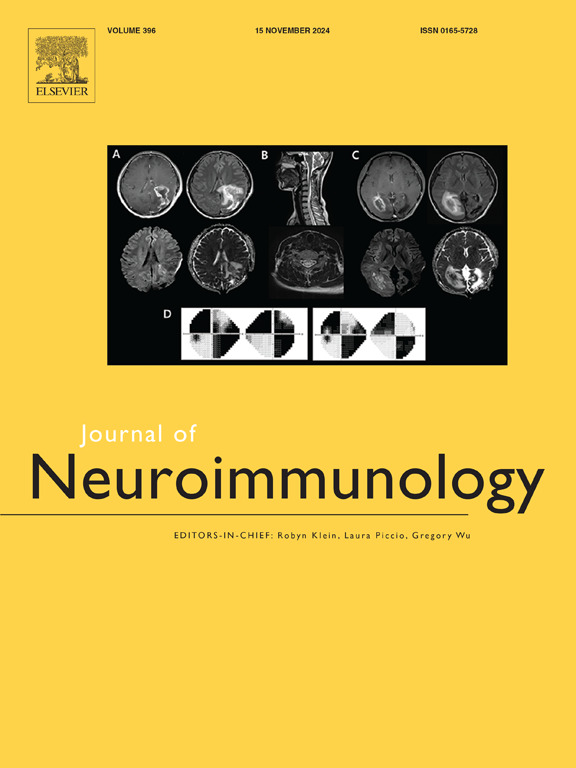Acute corticosteroid-responsive post-infection myositis in adults
IF 2.9
4区 医学
Q3 IMMUNOLOGY
引用次数: 0
Abstract
Functional disability myalgia is a common condition that frequently leads to significant disability, but its diagnosis is challenging because of its diverse etiologies. While hereditary myalgia has been wells tudied, infection-related myalgia, particularly post-infection forms, remains underrecognized. In this study, six adult patients with severe post-infection myalgia were described. The mean age of onset for these patients was 63.2 ± 16.2 years. All patients experienced myalgia and muscle weakness in the proximal muscles of the lower limbs, which occurred 1–4 weeks after the recovery from symptoms of suspected viral infection, resulting in a significant functional disability. Laboratory tests revealed that creatine kinase levels were not elevated, yet increases in C-reactive protein, erythrocyte sedimentation rate, and interleukin-6 levels were observed. Muscle MRI demonstrated significant edema in the lower limb muscles of 5 patients, while muscle biopsy indicated mild inflammatory myopathy changes in 5 patients. Severe muscle pain were unresponsive to nonsteroidal anti-inflammatory drugs but showed a significant response to steroids, and most patients had favorable prognoses. These clinical features differed from previously documented cases of post-infection myositis, suggesting a distinct subset of infection-related myalgia. Our findings highlighted the importance of recognizing this condition in adults and suggested the need for broader diagnostic criteria to better classify infection-related myopathies.
成人感染后急性皮质类固醇反应性肌炎
功能性残疾肌痛是一种常见的情况,经常导致显著残疾,但其诊断是具有挑战性的,因为它的多种病因。虽然遗传性肌痛已经得到了很好的研究,但感染相关的肌痛,特别是感染后的形式,仍然没有得到充分的认识。在这项研究中,描述了6例严重感染后肌痛的成年患者。患者平均发病年龄为63.2±16.2岁。所有患者在疑似病毒感染症状恢复后1-4周均出现下肢近端肌痛和肌无力,导致严重的功能障碍。实验室检查显示肌酸激酶水平未升高,但c反应蛋白、红细胞沉降率和白细胞介素-6水平升高。肌肉MRI显示5例患者下肢肌肉明显水肿,肌肉活检显示5例患者轻度炎性肌病改变。严重的肌肉疼痛对非甾体抗炎药无反应,但对类固醇有显著反应,大多数患者预后良好。这些临床特征不同于先前记录的感染后肌炎病例,提示感染相关肌痛的一个独特子集。我们的研究结果强调了在成人中认识到这种情况的重要性,并建议需要更广泛的诊断标准来更好地分类感染相关的肌病。
本文章由计算机程序翻译,如有差异,请以英文原文为准。
求助全文
约1分钟内获得全文
求助全文
来源期刊

Journal of neuroimmunology
医学-免疫学
CiteScore
6.10
自引率
3.00%
发文量
154
审稿时长
37 days
期刊介绍:
The Journal of Neuroimmunology affords a forum for the publication of works applying immunologic methodology to the furtherance of the neurological sciences. Studies on all branches of the neurosciences, particularly fundamental and applied neurobiology, neurology, neuropathology, neurochemistry, neurovirology, neuroendocrinology, neuromuscular research, neuropharmacology and psychology, which involve either immunologic methodology (e.g. immunocytochemistry) or fundamental immunology (e.g. antibody and lymphocyte assays), are considered for publication.
 求助内容:
求助内容: 应助结果提醒方式:
应助结果提醒方式:


